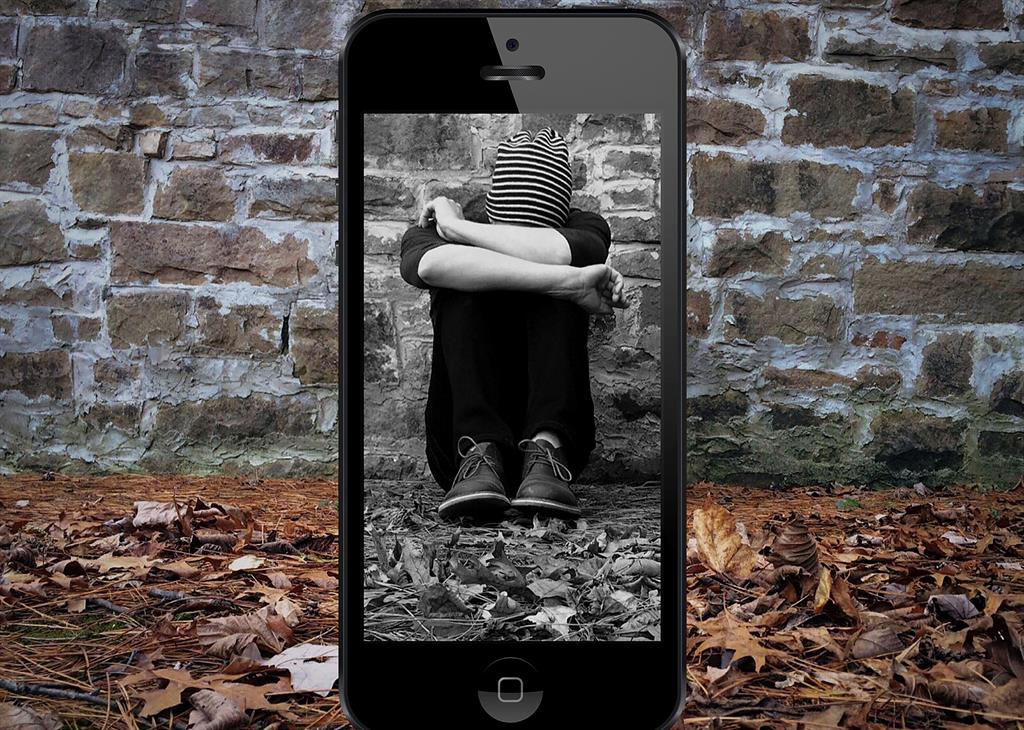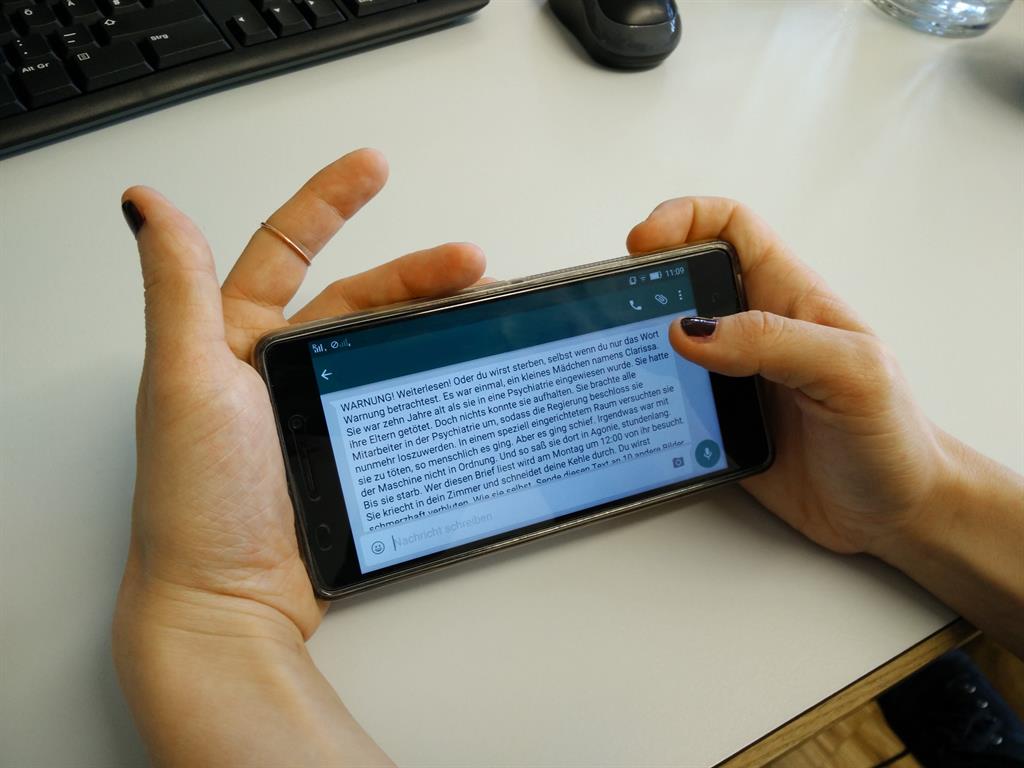The battle against keyboard warriors
Social media and technology have become an integrated part of society, but so has cyberbullying, and the youth is confronted by this daily.
Mariselle Stofberg
With the rise of social media and the continued growth of technology, the issue of cyberbullying has become a very real and very dangerous threat towards the youth.
Legal expert Kai Kleingunther, school psychologist Jessica Ulrich and security experts Andrew Fordred and Rigo Reddig from Cynetio Cyber Security Solutions hosted an important discussion on the dangers of cyberbullying and their attempts to stop it.
“Something we have all seen and experienced is the issue of trolling, which leaves a very permanent mark on the internet and the victim. Trolling is defined as creating discord on the internet by starting quarrels or upsetting people by posting inflammatory or off-topic messages in an online community,” Fordred said.
“During my presentations, I usually ask attendees how long they will be able to sit through the presentation without looking at their phones, and the majority of them say they won’t be able to go without using their phones. That is the problem. We are completely distracted by devices and social media, and we have become so consumed by them that we miss key issues,” he added.
“We don’t realise the dangers of cyberbullying, and we often think that this is only done by children. But they learn bullying from adults, who bully each other, and social media is the most common platform for cyberbullying worldwide,” he said.
Fear, uncertainty and division
“Social media has just exploded with a whole bunch of what we call FUD, which is fear, uncertainty and division. And it has created this problematic environment where social acceptance and social reinforcement for bullying is created and encouraged. Young people crave this acceptance online and thrive on this instant gratification that makes you feel good when you see your followers count or hear the beep of an incoming notification, which again creates a vicious cycle of addiction to social media,” Fordred said.
He added that addictions and abuse go hand in hand. Technology and social media are not evil, the problem is when it becomes unbalanced and then we suffer from the consequences, he said.
Just like alcohol and drugs, technology releases dopamine, which makes us feel good, but the consequences thereof can be detrimental for young minds if it is not controlled.
“We lose the ability to connect beyond our phones and social media, and this will only continue to worsen if something is not done. Children and millennials are suffering from an addiction to social media and technology, and as employers, we need to understand that they are entering the workplace with an addiction which we rarely screen for because cyberbullying is a consequence of social media and technology addiction,” he added.
Characteristics of cyberbullying
Kleingunther touched on some of the characteristics of cyberbullying. Cyberbullying is the use of technology to harass, threaten, embarrass or target another person online. “Cyberbullying is an extension of traditional bullying and is a more willful, aggressive and intentional behaviour,” he said.
Kleingunther added that the platforms where the most cyberbullying takes place are Instagram and Facebook, while Snapchat, WhatsApp, YouTube and Twitter are not far behind.
He said cyberbullying is characterised by anonymity and a lack of accountability, which is sometimes dubbed as cowardly bullying where bullies hide behind a screen.
“Coupled to anonymity is disinhibition where the bully avoids direct contact with the victim. I think the biggest problem with cyberbullying is the accessibility - the bully has access to the victim 24/7 throughout the year,” he said.
Lack of accountability
Ulrich said one of the biggest issues with regards to cyberbullying is how children are faced with a world where they are no longer accountable for what they say. “Not only do we have that physical distance between the victim and those we target, but we have such an array of choices on how we can remain anonymous. Now kids can be as rude and mean as they want to, with no direct consequence for what is done.”
She said she has witnessed and experienced how people get attacked online for having an opinion and then told that the world would be better if they did not exist, and this happens on a school level more and more every day.
Schools need to invest in the proper resources and policies to deal with cyberbullying cases amongst learners because now the threats learners face occur more often than ever before, she said.
“The problem is that many teachers do not have the technological skills that learners have or use the same platforms that they do. It is important to establish that trust relationship with learners, so they feel comfortable opening up and sharing with you as a teacher.”
Kleingunther said Namibia needs to look at international and national instruments to combat cyberbullying to protect children online.
“We are still struggling with the drafting of laws and policies because this a new phenomenon, but this doesn’t mean there are no legal remedies available for cyberbullying.”
Role of parents
Ulrich added that it is important for parents to try and create dialogue and space where their children feel no judgement.
“Children are so afraid of judgement, which is why they tend to be afraid to open up to parents. As a parent, you can listen to them and try to see things from their perspective.”
Ulrich said it is important to work with the victim of cyberbullying, so they can be equipped with the necessary skills to stand up for themselves.
“Children need to learn how to assert themselves and learn that the world is sometimes cruel and harsh, and how they can protect themselves against these things.”
She added that it is important to allow children to set boundaries for themselves where they can switch off their phones and step away from technology.
“We expect them to be reachable 24/7, but how will they be able to switch off from social media if we do not create a space for them to do that?” Ulrich asked.
“We have to teach children to recognise and realise what they find offensive and why because then the power is in their hands, not in the hands of the bully. When they understand why certain statements or things hurt them, we empower them to become more resilient and to diffuse situations. We then help to build their self-esteem and empower them so they can protect themselves online.”
Fact boxes/Infographics
Characteristics
Anonymity and a lack of accountability for actions
Disinhibition where the bully avoids direct contact with the victim, hiding behind their screen
Accessibility to the victim 24/7
Publicity and a wider audience
Permanent damage to the victim and their reputation
Types of cyberbullying
Flaming: The use of angry or vulgar language online
Masquerading or impersonation: Copying the victim’s posts and using their profiles and pages to post or send messages
Doxing or digital vigilantism: The process of researching and collecting private and personal information and posting it online
Exclusion: Intentionally excluding someone from an online group
Online harassment: The repeated sending of rude and insulting messages
Trickery: Tricking someone to reveal secrets or embarrassing information which is then shared online
Cyberstalking: Sending threats or intimidating messages online
Denigration: Online dissing or posting cruel gossip about someone to damage their reputation.
How to identify when someone is a victim of cyberbullying
Sudden or unexpected stop of electronic device use
When someone becomes nervous or jumpy when they receive messages or emails
When a person is uneasy about going to school or their workplace
Avoiding discussions about what happens on their electronic devices
Victims become withdrawn or socially distant
Psychological impact of cyberbullying
Anxiety
Depression
Emotional distress
Low self-esteem leads to poor performance
Avoidance of social engagements
Trust issues
Physical violence
Self-inflicted harm
Suicide
Steps to take to protect yourself online
Never reveal personal information
Do not share your password with anyone
Acquire in-depth knowledge of cyberbullying
Take care when you upload photos online
Think twice before you post online
Always try to log out of your accounts after use
Always try to set up privacy controls your social media accounts
Install monitoring software on your computer
What to do when you are a victim of cyberbullying
Try to save all the evidence of the online bullying
If possible, try and identify the cyberbully
Calmly and strongly tell them to stop
Stop or remove any material
Contact your parents, teachers or your employer
Contact the police.
With the rise of social media and the continued growth of technology, the issue of cyberbullying has become a very real and very dangerous threat towards the youth.
Legal expert Kai Kleingunther, school psychologist Jessica Ulrich and security experts Andrew Fordred and Rigo Reddig from Cynetio Cyber Security Solutions hosted an important discussion on the dangers of cyberbullying and their attempts to stop it.
“Something we have all seen and experienced is the issue of trolling, which leaves a very permanent mark on the internet and the victim. Trolling is defined as creating discord on the internet by starting quarrels or upsetting people by posting inflammatory or off-topic messages in an online community,” Fordred said.
“During my presentations, I usually ask attendees how long they will be able to sit through the presentation without looking at their phones, and the majority of them say they won’t be able to go without using their phones. That is the problem. We are completely distracted by devices and social media, and we have become so consumed by them that we miss key issues,” he added.
“We don’t realise the dangers of cyberbullying, and we often think that this is only done by children. But they learn bullying from adults, who bully each other, and social media is the most common platform for cyberbullying worldwide,” he said.
Fear, uncertainty and division
“Social media has just exploded with a whole bunch of what we call FUD, which is fear, uncertainty and division. And it has created this problematic environment where social acceptance and social reinforcement for bullying is created and encouraged. Young people crave this acceptance online and thrive on this instant gratification that makes you feel good when you see your followers count or hear the beep of an incoming notification, which again creates a vicious cycle of addiction to social media,” Fordred said.
He added that addictions and abuse go hand in hand. Technology and social media are not evil, the problem is when it becomes unbalanced and then we suffer from the consequences, he said.
Just like alcohol and drugs, technology releases dopamine, which makes us feel good, but the consequences thereof can be detrimental for young minds if it is not controlled.
“We lose the ability to connect beyond our phones and social media, and this will only continue to worsen if something is not done. Children and millennials are suffering from an addiction to social media and technology, and as employers, we need to understand that they are entering the workplace with an addiction which we rarely screen for because cyberbullying is a consequence of social media and technology addiction,” he added.
Characteristics of cyberbullying
Kleingunther touched on some of the characteristics of cyberbullying. Cyberbullying is the use of technology to harass, threaten, embarrass or target another person online. “Cyberbullying is an extension of traditional bullying and is a more willful, aggressive and intentional behaviour,” he said.
Kleingunther added that the platforms where the most cyberbullying takes place are Instagram and Facebook, while Snapchat, WhatsApp, YouTube and Twitter are not far behind.
He said cyberbullying is characterised by anonymity and a lack of accountability, which is sometimes dubbed as cowardly bullying where bullies hide behind a screen.
“Coupled to anonymity is disinhibition where the bully avoids direct contact with the victim. I think the biggest problem with cyberbullying is the accessibility - the bully has access to the victim 24/7 throughout the year,” he said.
Lack of accountability
Ulrich said one of the biggest issues with regards to cyberbullying is how children are faced with a world where they are no longer accountable for what they say. “Not only do we have that physical distance between the victim and those we target, but we have such an array of choices on how we can remain anonymous. Now kids can be as rude and mean as they want to, with no direct consequence for what is done.”
She said she has witnessed and experienced how people get attacked online for having an opinion and then told that the world would be better if they did not exist, and this happens on a school level more and more every day.
Schools need to invest in the proper resources and policies to deal with cyberbullying cases amongst learners because now the threats learners face occur more often than ever before, she said.
“The problem is that many teachers do not have the technological skills that learners have or use the same platforms that they do. It is important to establish that trust relationship with learners, so they feel comfortable opening up and sharing with you as a teacher.”
Kleingunther said Namibia needs to look at international and national instruments to combat cyberbullying to protect children online.
“We are still struggling with the drafting of laws and policies because this a new phenomenon, but this doesn’t mean there are no legal remedies available for cyberbullying.”
Role of parents
Ulrich added that it is important for parents to try and create dialogue and space where their children feel no judgement.
“Children are so afraid of judgement, which is why they tend to be afraid to open up to parents. As a parent, you can listen to them and try to see things from their perspective.”
Ulrich said it is important to work with the victim of cyberbullying, so they can be equipped with the necessary skills to stand up for themselves.
“Children need to learn how to assert themselves and learn that the world is sometimes cruel and harsh, and how they can protect themselves against these things.”
She added that it is important to allow children to set boundaries for themselves where they can switch off their phones and step away from technology.
“We expect them to be reachable 24/7, but how will they be able to switch off from social media if we do not create a space for them to do that?” Ulrich asked.
“We have to teach children to recognise and realise what they find offensive and why because then the power is in their hands, not in the hands of the bully. When they understand why certain statements or things hurt them, we empower them to become more resilient and to diffuse situations. We then help to build their self-esteem and empower them so they can protect themselves online.”
Fact boxes/Infographics
Characteristics
Anonymity and a lack of accountability for actions
Disinhibition where the bully avoids direct contact with the victim, hiding behind their screen
Accessibility to the victim 24/7
Publicity and a wider audience
Permanent damage to the victim and their reputation
Types of cyberbullying
Flaming: The use of angry or vulgar language online
Masquerading or impersonation: Copying the victim’s posts and using their profiles and pages to post or send messages
Doxing or digital vigilantism: The process of researching and collecting private and personal information and posting it online
Exclusion: Intentionally excluding someone from an online group
Online harassment: The repeated sending of rude and insulting messages
Trickery: Tricking someone to reveal secrets or embarrassing information which is then shared online
Cyberstalking: Sending threats or intimidating messages online
Denigration: Online dissing or posting cruel gossip about someone to damage their reputation.
How to identify when someone is a victim of cyberbullying
Sudden or unexpected stop of electronic device use
When someone becomes nervous or jumpy when they receive messages or emails
When a person is uneasy about going to school or their workplace
Avoiding discussions about what happens on their electronic devices
Victims become withdrawn or socially distant
Psychological impact of cyberbullying
Anxiety
Depression
Emotional distress
Low self-esteem leads to poor performance
Avoidance of social engagements
Trust issues
Physical violence
Self-inflicted harm
Suicide
Steps to take to protect yourself online
Never reveal personal information
Do not share your password with anyone
Acquire in-depth knowledge of cyberbullying
Take care when you upload photos online
Think twice before you post online
Always try to log out of your accounts after use
Always try to set up privacy controls your social media accounts
Install monitoring software on your computer
What to do when you are a victim of cyberbullying
Try to save all the evidence of the online bullying
If possible, try and identify the cyberbully
Calmly and strongly tell them to stop
Stop or remove any material
Contact your parents, teachers or your employer
Contact the police.









Comments
Namibian Sun
No comments have been left on this article